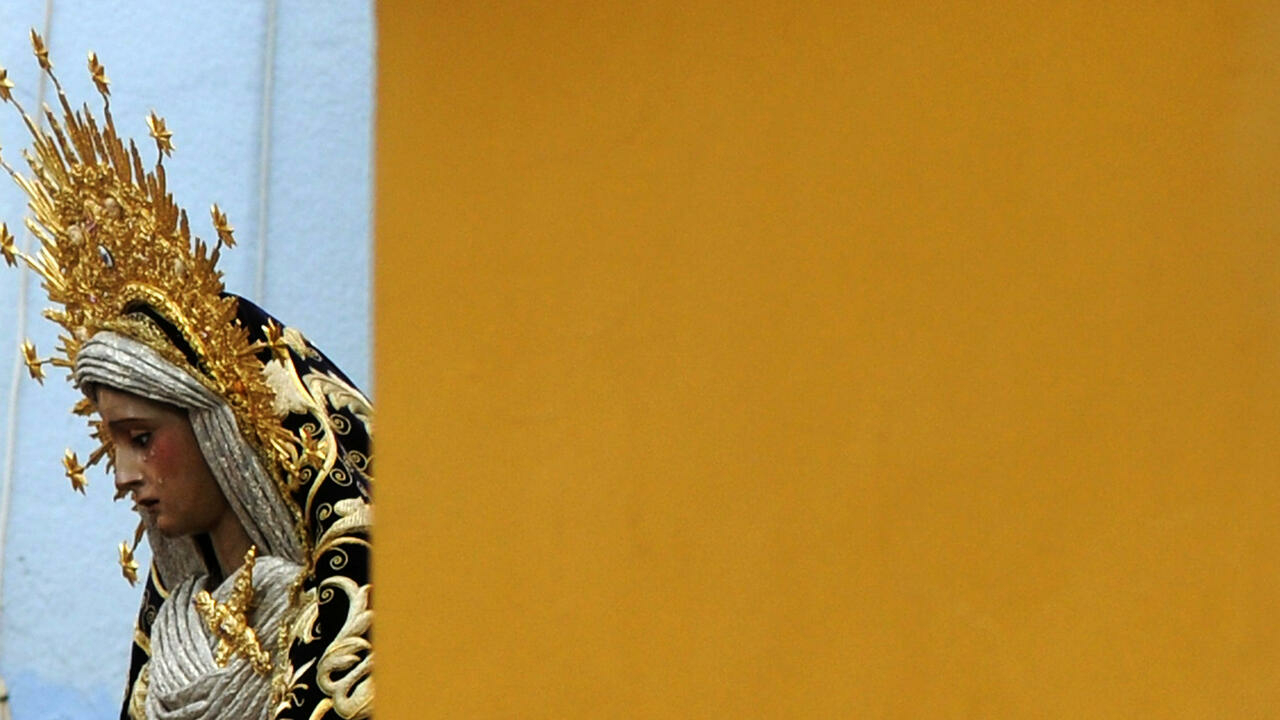
Seville’s Holy Week processions began in the late 19th century and gay stylists have been involved in adorning the Virgin Mary statues since the beginning
Seville (Spain) (AFP) – Working with rich fabrics, fine lace and flowers, gay stylists have long played a key role in dressing the Virgin Mary figures carried through the streets of southern Spain during Holy Week.
Advertising Read more
But their participation in this week of religious processions which marks the peak of the Catholic calendar comes at a price: silence about their sexual orientation.
And it’s a compromise that is making them increasingly uncomfortable.
“Seville’s Holy Week is a contemporary festival dating back to the end of the 19th century and the gay community has been involved since the very beginning,” says Rafael Caceres, an anthropology expert at Pablo Olavide University in the southern city of Seville.
The Andalusian capital is a hive of activity ahead of Holy Week, which starts on Palm Sunday — April 10 — and culminates on Easter Day when Christians remember the death and resurrection of Jesus.
Many thousands throng the streets to watch life-sized models of the Virgin Mary and Christ carried through the streets by different brotherhoods and religious associations.
There are dozens of different incarnations of the Virgin Mary in the Holy Week processions with Our Lady of Sorrows, Our Lady of Mount Carmel and the Virgin of Macarena’s Hope clear favourites among the gay community CRISTINA QUICLER AFP/File
The figures are painstakingly dressed and adorned by volunteers at religious associations.
“There are florists, embroidery specialists, jewellers, stylists” who work together on the virgin figures and “almost all of them are gay”, says Pedro Pablo Perez Ochavo of Seville’s Ichtys Cristian@s LGBT+H which lobbies for equality within the Catholic Church.
‘A path to integration’
With their role in the brotherhoods, gay men can find “a way to fit in”, a space in which “their artistic work and persona is valued”, said Carlos Carvento, a 26-year-old dancer and drag queen from Cordoba.
Dancer and drag queen Carlos Carvento caused a stir several years ago in Holy Week by walking through the streets in high heels wearing his grandmother’s elaborate mantilla head covering JORGE GUERRERO AFP
“Acceptance is based on that: a person can be a virgin dresser and gay but he wouldn’t say it. As long as his public life is reasonably discreet so it doesn’t tarnish the brotherhood,” explains Caceres, the anthropologist.
“The Church’s attitude is pretty laissez-faire as long as there’s no scandal,” said Jesus Pascual whose 2021 documentary film “Dolores, guapa!” explored the links between Andalusia’s gay community and Holy Week.
But Antonio Munoz Tapia began to have problems after marrying his partner David in 2016.
“If you don’t have a partner, if you live alone and keep quiet as I did, they don’t cause you any problems,” explained this 50-year-old businessman who works in the oil sector.
Two decades ago, he set up a brotherhood in Dona Mencia, his village near Cordoba, taking the prestigious top role as its “big brother”.
But since getting married, requests for him to give the speech that opens Holy Week in his village have petered out.
Olive oil entrepreneur Antonio Munoz Tapia began to have problems with his involvement in Holy Week after marrying his partner David in 2016 JORGE GUERRERO AFP
And more recently the Church printed its annual magazine for the brotherhoods without including his article calling for equality for the LGBT community.
Munoz Tapia says he’s never experienced such an attitude within the brotherhood nor among locals, Spain being a country where people are very open-minded about LGBT issues.
“I just don’t understand this Pharisee-like attitude — that we’re good enough for the brotherhoods but not good enough to deserve the same rights,” he said.
‘A Christian lifestyle’
Seville’s archdiocese told AFP it “did not by any means have a register which specified people’s sexual identity” and that “anyone who wanted to deeply experience Holy Week in Seville could do so without any problem”.
However, diocesan rules say those leading brotherhoods or religious organisations must “stand out for their Christian lifestyle in their personal life, their family life and in society”.
“They don’t use the word ‘homosexual’ but they use this article” against those identifying as LGBT or people who are divorced, explains Ochavo of Ichtys.
Jose Victor Rodriguez and Jose Luis Medina, fashion designers known as “Victorio” and “Lucchino”, got married in 2007 and shortly afterwards, a Seville newspaper published a letter criticising the fact they were allowed to dress the Holy Week virgins.
“We’ve led a life that’s more upright and moral than many other people,” insists Medina, describing the letter as a “despicable” attack.
Lady Gaga v. Our Lady of Sorrows
Three years ago, drag queen Carvento celebrated Holy Week by walking through Cordoba in a black skirt, high heels and his grandmother’s mantilla, a traditional embroidered black shawl used during fiestas or solemn occasions.
His picture on Instagram was initially taken down following several complaints, but later allowed.
“They often say that [the gay community] is taking over (this annual tradition) but I’m not taking over anything because it’s mine too!”
‘They say the gay community is taking over Holy Week but I’m not taking over anything because it’s mine too!’ says drag queen and dancer Carlos Carvento JORGE GUERRERO AFP
During Holy Week, dozens of different Virgin Marys are paraded through the streets with Our Lady of Sorrows, Our Lady of Mount Carmel, Our Lady of the Broom and the Virgin of Macarena’s Hope clear favourites among the gay community.
“You might have a gay fan of Lady Gaga or of Rosalia in Barcelona but here, we’re fans of the Virgin of la Macarena or the Glorious Ascension, or Our Lady of Sorrows,” grins Carvento.
© 2022 AFP








